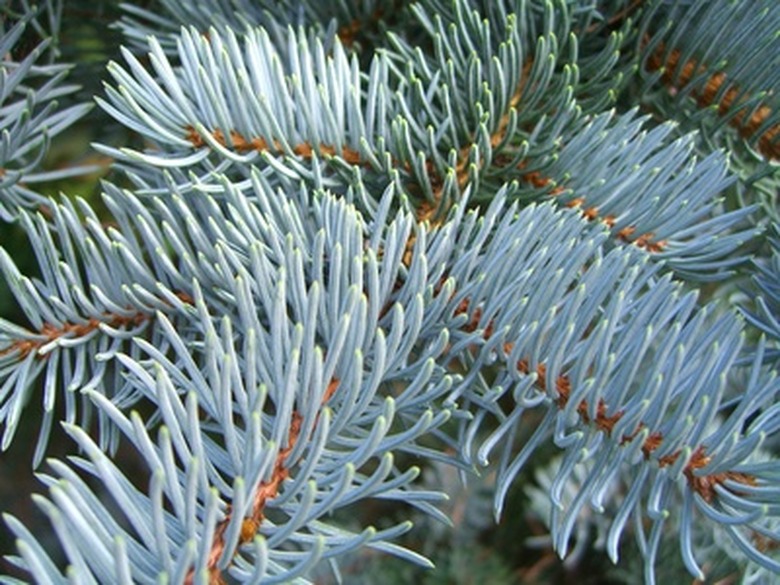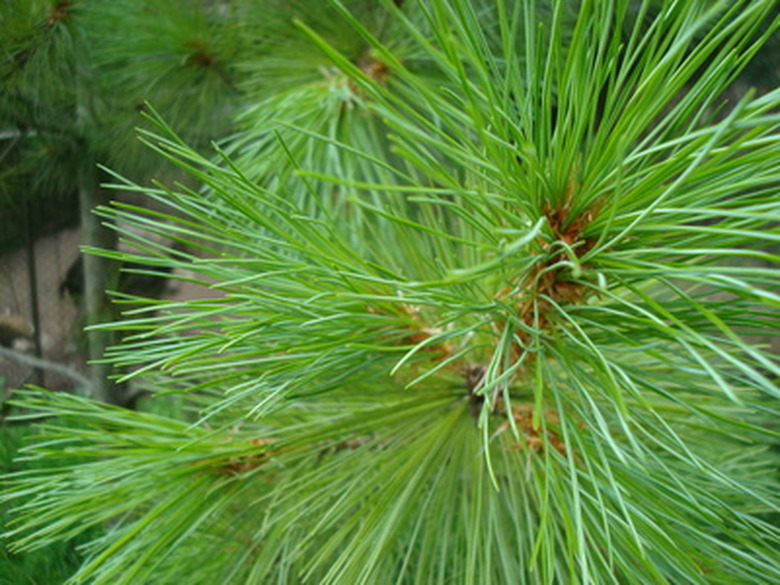Conifer Leaf Identification
The foliage on the conifer trees of North America–a group of species that includes the pines, spruces, cedars, firs and cypresses—is unlike that of trees such as oak, maple and birch. These trees possess needles or foliage resembling scales on small branchlets. With few exceptions, the conifers are evergreen, keeping this foliage year-round. Identifying the different types of foliage on conifers is much easier when you concentrate your efforts on certain criteria.
Size
The needles on the many kinds of pines are elongated and much larger as opposed to those on other conifers with needles. While the size of needles does differ among the firs, hemlocks and spruces, the difference is not so obvious that it quickly aids in identification. With a pine, however, you can measure needles for their length and often get a good idea of what type of tree it may be. For example, the Nearctica website notes the needles of long-leaf pine may be 18 inches in length, while those of sand pine are only from 2 to 3.5 inches long.
- The foliage on the conifer trees of North America–a group of species that includes the pines, spruces, cedars, firs and cypresses—is unlike that of trees such as oak, maple and birch.
- The needles on the many kinds of pines are elongated and much larger as opposed to those on other conifers with needles.
Scales
The leaves that occur on the species of conifers belonging to the family Cupressaceae are not at all similar to those of the Pinaceae family, which includes the pines, firs and spruces. Cypresses, a group of trees native to the Western states, have small overlapping scales covering the branchlets that extend off the twig. Most of the junipers have foliage that consists of scales overlapping the branchlets as well, with common juniper the exception; it has needles. The cedars, another major group of trees in this genre, have flattened foliage, with the leaves scalelike.
Color
The color of conifer leaves goes a long way in some instances in helping you recognize the species. The Colorado blue spruce is a case in point, as its foliage has a bluish tint that gives the tree its name. The flat needles of a balsam fir are a shiny green on their upper surface but have two whitish to silvery bands running along the undersides. The leaves of tamarack are bluish-green, according to the "National Audubon Society Field Guide to Trees." These needles actually turn yellow and then fall off before winter.
- The leaves that occur on the species of conifers belonging to the family Cupressaceae are not at all similar to those of the Pinaceae family, which includes the pines, firs and spruces.
- Cypresses, a group of trees native to the Western states, have small overlapping scales covering the branchlets that extend off the twig.
Growing From Branches
How the leaves of conifers grow from the branches is important for identification purposes. Fir tree needles grow directly out of the branches. If you remove one, you will notice a distinct depression left in the branch. Pine needles grow in bundles, with certain species having a specific number of needles in each bundle as it develops from the branch. Species such as sugar pine and white pine have needles in bundles of fives, while those of red pine grow in bundles of twos. Hemlock needles grow from minute stems. Spruce needles emerge from a peg-like base on the branch.
- How the leaves of conifers grow from the branches is important for identification purposes.
- Pine needles grow in bundles, with certain species having a specific number of needles in each bundle as it develops from the branch.
Features
Conifer leaves have additional features. The aroma that conifer foliage may exude when you crush it between your fingers can help you recognize what it is. The needles of white spruce give off an odor similar to that of a skunk. Balsam fir and Fraser fir have an aromatic balsam smell to their foliage. The texture of the foliage is a factor in identification. Hemlocks have soft needles, while those of the spruces are rigid and prickly. White pine needles are flexible, while those of the jack pine are quite stiff.
- Conifer leaves have additional features.
- White pine needles are flexible, while those of the jack pine are quite stiff.
References
- Ohio Department of Natural Resources: Ohio Trees Index
- "National Audubon Society Field Guide to Trees"; Elbert L. Little; 2008
- "Trees of North America"; C. Frank Brockman; 1996

